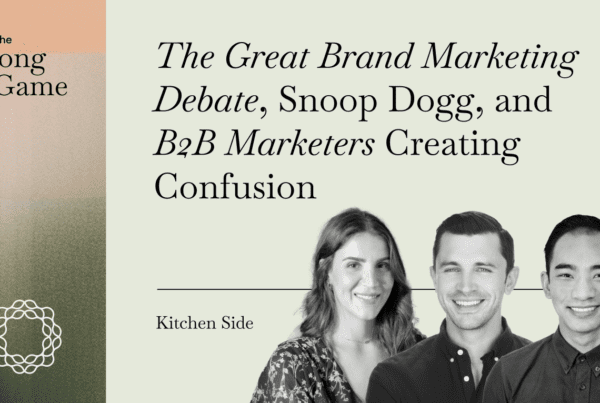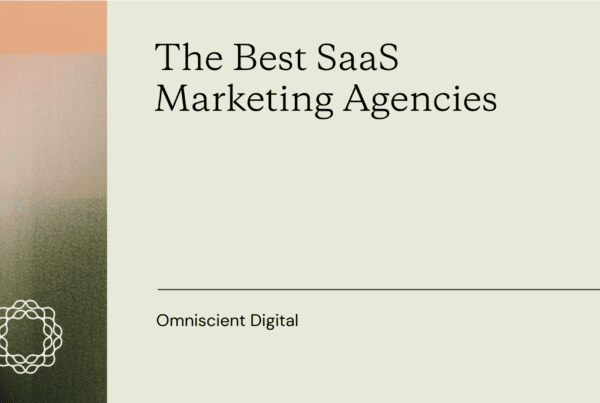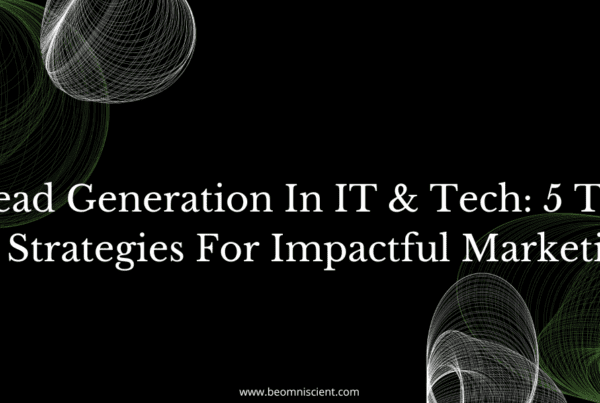
I won’t rehash the ultimate guide to B2B lead generation here. You know all the tactics that have been repeated over and over again.
Create ebooks, run webinars, run targeted campaigns. You’re doing all of that. So are your competitors.
But the world has changed.
Buyers have changed.
They’re more discerning of when they’re being marketed to.
The B2B software industry has taken cues from B2C software companies and people (including us), come to expect easy-to-use software with an excellent user experience.
What does all of that mean for our lead gen activities?
For one, it doesn’t mean stop doing what you’re doing.
You just need to rethink how you’re doing it all.
This isn’t going to be a post about the best lead generation tools with the best functionalities, or specific email marketing tactics, or demand generation playbooks.
Let’s start with where B2B lead generation has been, what has changed, and what to think about as you evolve your lead generation efforts.
How B2B lead generation has been done (in a nutshell)
B2B businesses typically have lead gen programs that focus on producing tons of content. That includes long-form blog posts, ebooks, white papers, and webinars.
Then that content would be promoted through paid ads, search engine marketing (SEM), paid social, display, and retargeting ads.
Account-based marketing (ABM) had a moment and people began call their efforts account-based marketing when really it amounted to throwing spaghetti at the wall.
The sales team would be sending outbound emails to target accounts, making cold calls, and multithreading by conducting outreach to multiple people at once.
There would also be a field marketing sponsoring and attending events and trade shows with the sales team.
All of these activities fall under the bucket of “lead generation campaigns” with the goal of getting contact information and then getting them on the phone, i.e a new lead.
What has changed about B2B lead generation?
There is exponentially more noise in the market.
There are exponentially more companies selling and marketing to your target market. Your target audience and buyers are getting dozens of emails a day.
Software is being and will continue to be commoditized. I can name 10 marketing automation software companies off the top of my head. That means there is little differentiation in terms of features, capabilities, and benefits.
Buyers who, as individuals, are consumers at the end of the day, have become more discerning and avoid ads like the plague.
Forgetting a/b testing email subject lines and CTAs.
They’re not opening emails. They’re unsubscribing and marking them as spam.
The Future of B2B Lead Generation Strategy
As a marketer at a B2B company, the key thing to take away is that people buy from people.
The days of a corporation with no personality or face attached to it are gone.
People do not trust faceless entities. They trust people.
That’s where decentralized content marketing comes into play.
There are 3 key things to think about for lead generation.
- How do I build trust? This is where you need to evolve your marketing to have a personality behind it.
- How do I differentiate from my competitors? More companies need to think about this.
- How do I stay top of mind? This is where most companies currently focused by pushing content out into the world.
How to build trust
People trust people they know. Building trust in your company and your product comes in two flavors:
- Borrow someone else’s face for your company. This usually means sponsorships with influencers.
- Create a face, or faces, for your company and associate them with the company brand.
Let’s start with what it means to borrow someone else’s face because that is a lot more straightforward.
By now you must have at least heard of influencer marketing. Get someone with a large following to create content for you, like videos that you can then use for ad campaigns. This works because people trust that person and therefore trust their recommendations.
This tends to be the easiest path and can get expensive.
Examples of this include folks like Corporate Bro who gets sponsored by sales software companies and Loe Whaley
The better option is to develop folks at the company who become trusted names by your target audience. At a high level that means continuing to do content marketing with a name attached to the content.
It doesn’t have to be someone on the leadership team, though that doesn’t hurt.
That means that person will have to start publishing content regularly.
An example of someone in leadership who did this is David Cancel who produced a podcast with Dave Gerhardt called Seeking Wisdom. This meant that potential decision makers would hear David Cancel speak, learn how he thinks and who he is as a person before they spoke to them. They felt like they already knew him and trusted him.
An example of someone not in leadership doing this is Kyle Jepson at HubSpot who has become known for his LinkedIn videos displaying an unparalleled amount of enthusiasm for announcing new features.
So what does this look like tactically speaking?
We could have a whole conversation about content strategies to reach your buyer persona and the various content formats to support this sort of effort, but let’s focus on three examples you can start with now.
Blog posts need to have a person on the byline.
It’s take stakes to have a content strategy and think about SEO. The additional consideration is to blog posts under a real byline, not “[company name] Team.” If you’ve been publishing content under no byline, go back and update them to have a byline, ideally someone who holds the opinion stated in the article.
Webinars hosted by that person (or those people)
Keep doing high-quality webinars, but don’t just have a random junior marketer hosting them. Have the person whose internal brand is being developed host the webinars. That means your prospects will become familiar with that person, connect with them on LinkedIn, and ultimately trust them.
Produce a podcast hosted by that person (or those people).
What better way to build trust than to be regularly speaking into a person’s ears? Think of podcasts like My First Million, All In, or Call Her Daddy. Listeners are all potential customers and because they’re listening to the host regularly, that person will build credibility and trust with those people. Every listen is a potential lead and a lead that trusts your brand is more qualified lead than someone who needs convincing. This is partly a reason why we started The Long Game podcast.
How to differentiate from competitors
As software becomes more commoditized, marketing strategy will need to be focused on product marketing. That means having someone dedicated to understanding the landscape of competitors, and developing messaging and positioning for your product.
If your prospects can’t tell the difference between your product and your competitor’s, how will they decide what product to choose?
Messaging and positioning could be its own book, in fact there is a book about it: Obviously Awesome by April Dunford.
Use Wynter if you need help testing your messaging.
How to stay top of mind
Go fishing where the fish are. Be where your target audience and buys are.
You’re already used to running ads on search and social media.
Now layer in having those individuals behind the company brand posting regularly to those social media platforms. Grow a following of people who trust those individuals.
When those folks are ready to buy, they’ll be more qualified than most random leads that come through.
Imagine the new sales process
Think about this.
Let’s say you decided to be one of the faces of the company and you’ve hosted a podcast for the last 2 years and amassed a following on LinkedIn.
Now you regularly get people reaching out to you to learn about your company and the product.
You send them an email, “Hey, let me connect you with one of our experts who can walk you through the product.”
Or “Hey, I’m actually hosting a webinar on this next week. Join me?”
That’s an inbound demo request. A marketing qualified lead.
Because they trusted you and went directly to you instead of going to the company website to request a demo.
Now imagine in their follow up, a sales rep is able to build on the trust you’ve already built with the person with a bulletproof demo and case studies.
Now imagine having marketing teams that are focused on building these individual brands within the company and how those various decentralized brands might build trust and bring in MQLs.
Better yet, crazy idea, maybe salespeople can become individual brands. That’s a new world of B2B sales.
But what if those people leave the company?
That’s a valid risk to consider. It can even be the case for people in leadership roles.
The alternative is not to create any individual brands and lose to competitors whose founders and team members have developed a brand that your buyers trust more.
The bright side is that if a person develops a large personal brand while at your company and leaves, it doesn’t mean you’ve completely lost brand affinity. People will still continue to associate that person with your brand, at least in the short term.
You can mitigate your risk and diversify your portfolio of brands by having multiple internal influencers.
What’s next?
Go beyond the company brand.
Your marketing campaigns should be used to build personal brands within the company that can be parlayed to enterprise value.
These concepts are particularly important for startups that need to break through the noise in B2B marketing.




